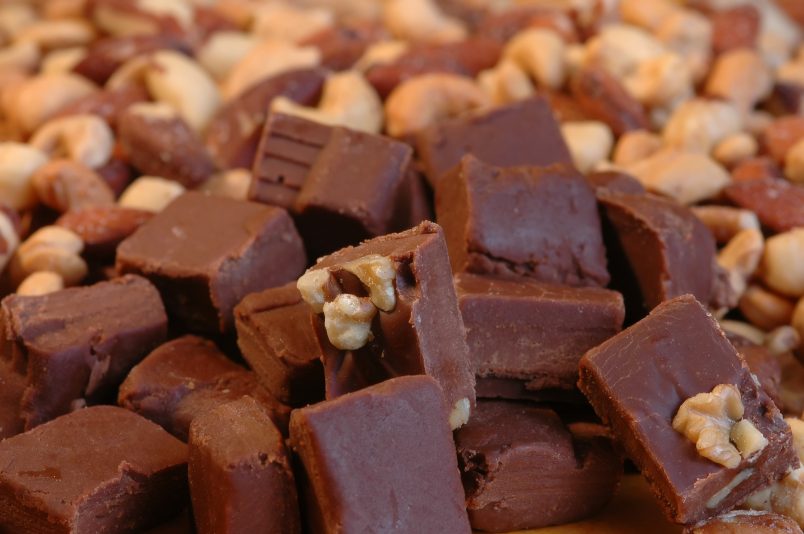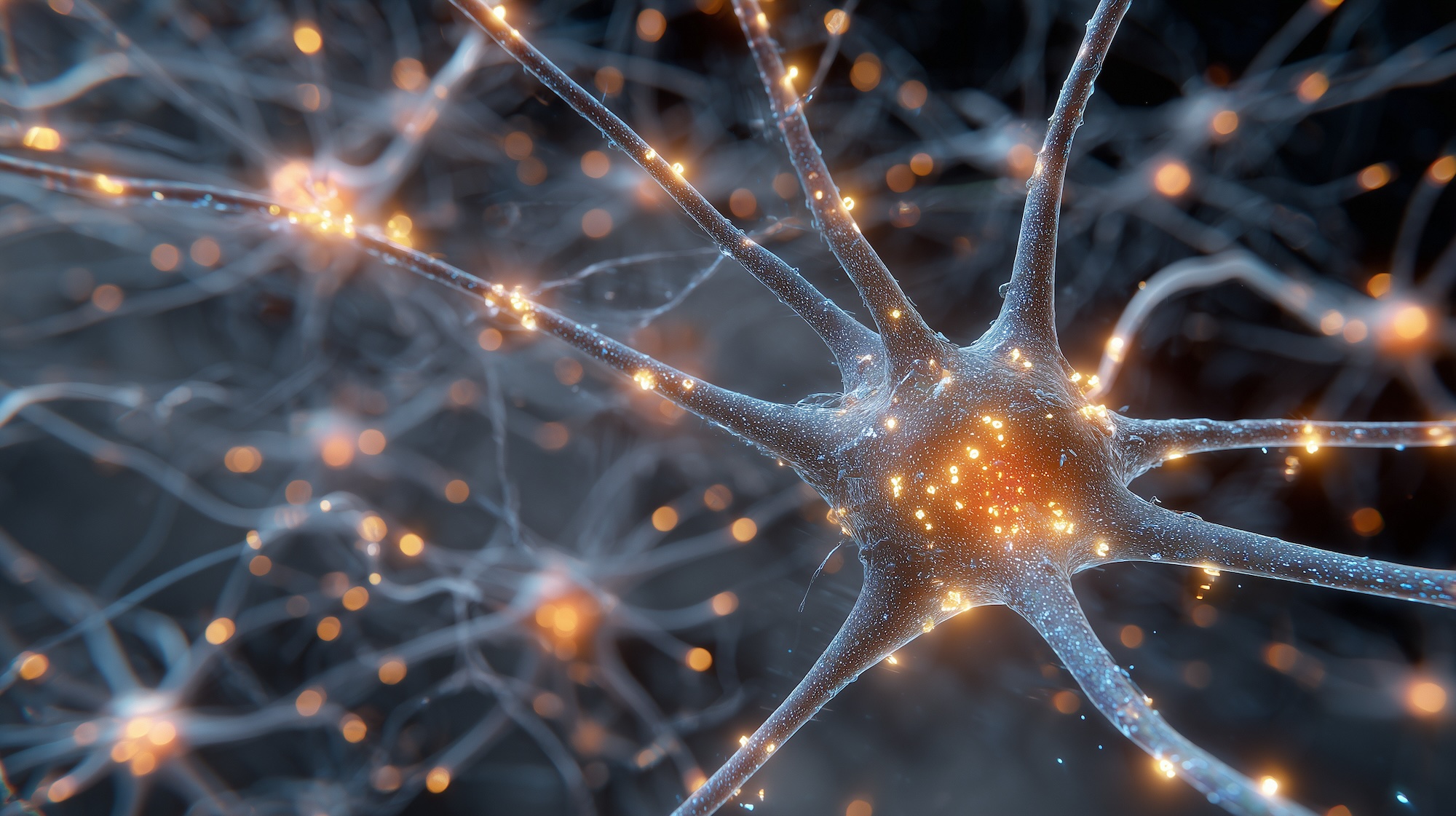How long can you go without eating?
We all fast while we sleep (unless you get up for a midnight snack). That’s why the first meal of the day is referred to as breakfast – it breaks the fast.
Although most people in modern society seem unable to go more than a few hours without food, it actually turns out that the human body is designed to fast.
Fasting creates ketones.
What are Ketones?
Before the proliferation of grocery stores and fast food chains, food was not as plentiful. There were cycles of feast and famine. In times of feast the body stores excess calories as body fat reserves so that during times of famine the cells are able to use the stored body fat as a fuel source. Think about a bear fattening up in autumn for a long winter of hibernation and emerging in the spring lean and hungry.
Most people think of carbohydrates as the primary fuel source of the body. However, in times of carbohydrate deprivation, most of the cells in the body are able to use fat for fuel, except for those in the brain. As the muscles and other organs begin to burn fat, the liver starts to produce ketone bodies. Also known as ketones, ketone bodies act as a fuel source for the brain.
When the brain begins to use ketones for fuel, cognitive ability and mental focus increase, bodily functions become more efficient, and fat metabolism kicks into high gear. This is referred to as ketosis or the Keto Zone.
It turns out that ketosis is actually the natural state of human metabolism. From the moment human children are born and begin consuming mother’s milk, they are in a mild state of ketosis. It is not until the introduction of a consistent supply of high sugar and starch foods that a human’s metabolism will switch out of a state of ketosis.
As children we begin consuming copious amounts of candies, breads, pastries, pastas, and treats and over time the metabolism loses it’s ability to use fat for fuel.
Repair Your Metabolism
Chronic carbohydrate consumption has been the result of decades of low-fat diet advice coupled with the myth that it is best to eat every couple of hours to keep the metabolism strong. This is only because everyone is addicted to sugar!
In fact the average American will consume around 66 pounds of added sugar per year! And this number does not even include the carbohydrates from all of the bread, potatoes, pasta, biscuits, tortillas, chips, and crackers that are so common in the American diet as well.
The modern epidemics of obesity, diabetes, and dementia are a direct result of increased sugar consumption. In fact, Alzheimer’s disease is now being called “type 3 diabetes” by many physicians and researchers.
When blood sugar levels are chronically elevated the body must produce tremendous amounts of insulin to keep things in balance. Too much insulin for too long reduces the body’s insulin sensitivity leading to pre-diabetes and eventually type 2 diabetes.
The excess sugar also switches the body into “feast” mode causing it to store fat for the next famine.
The problem is that in our modern lives we are always in feast mode and the famine never comes.
Thankfully, the solution is easy and natural.
Enter the Keto Zone
The Keto Zone is a state of nutritional ketosis, or keto adaptation, where the cells are burning fat for fuel. This includes belly fat, fat on your thighs, your hips, and even the visceral internal fat which is the most dangerous body fat to have.
The ideal keto diet is high fat, adequate protein, and very low-carb.
Healthy fats include:
Extra Virgin Olive Oil
Coconut Oil
Avocado and Avocado Oil
Nuts and Seeds
Egg Yolks
Grass-fed Beef Tallow
MCT Powder
Healthy proteins (in moderate portions) include:
Wild-Caught Fish (especially salmon and sardines)
Pasture Rasied Poultry (chicken, turkey, quail)
Grass-fed Beef
Bison
Venison
The Keto Zone diet is also high in low-carb vegetables and herbs.
This includes copious amounts of leafy greens such as:
Kale
Spinach
Collard Greens
Chard
Mustard Greens
Arugula
Bok Choy
As well as other cruciferous vegetables like:
Broccoli
Cauliflower
Brussels Sprouts
Cabbage
Herbs such as:
Cilantro
Parsley
Rosemary
Sage
Oregano
It is also important to get pre-biotic fiber from the allium family of vegetables such as:
Garlic
Onion
Chives
Shallots
Leeks
To enter the Keto Zone, carbohydrates must be kept under 20 grams per day. For a healthy person it can take around 3 days for full keto adaptation to occur. For those who are pre-diabetic or who have full blown type 2 diabetes it can take 5-7 days or maybe longer.
During the transition period as the body remembers how to use fat for fuel and the metabolic pathways for burning fat are re-established, some people may experience very mild symptoms such as brain fog, fatigue, minor headache, or nausea.
This is referred to as the “keto flu,” due to the flu-like symptoms.
To help combat keto flu symptoms, the Keto Zone diet includes the use of specially designed supplements that increase fat digestion and absorption, balance appetite, and provide adequate fuel for the brain so you can transition effortlessly into the Keto Zone.
Learn more by picking up my newest book “Keto Zone Diet” at www.KetoZone.com, where you can also find all the Keto Zone supplements and lifestyle suggestions.
Check Out More Keto Articles Join Our Keto Group
100 COMMENTS
Comments are closed.


















Интересует современное стоматологическое лечение без неприятных ощущений в Питере? [url=https://smails-clinic.ru]https://smails-clinic.ru[/url] . В нашей стоматологии применяются инновационные решения, запись доступна в этот же день, а осмотр и консультация врача — включены в сервис и без спешки.
Нужна медицинскую справку в день обращения в Москве — быстро и без похода в клинику? На [url=https://akkred-med.ru]https://akkred-med.ru[/url] можно заказать медицинские документы, от справки 095/у, 027/у до справок комиссии, справок для бассейна, занятий спортом и виз. Заполнение заявки занимает считанные минуты, потом — курьерская доставка. Всё законно, без разглашения и без задержек. Узнавайте подробности — медсправка быстро, оформление онлайн, доставка справки.
Нужна медкнижку в течение суток без лишних задержек?
В центре Москвы наши сотрудники оперативно выдают справки всех типов (форма 086У, 095У, справки для автошколы) и доставляют прямо к вам — легально и комфортно.
Оформите заказ сегодня — всё легально, платите только при получении! [url=https://aleksandriya-med.ru]https://aleksandriya-med.ru[/url]
Для владельцев машин в Рыбинске — СТО “АвтоАйболит” выполняет проверку, техническое обслуживание, обслуживание двигателя, трансмиссии, ходовой части и систем электрики (с возможностью ремонт генератора от 800 ?) на высокоточном техническом оснащении. [url=https://avtoaibolit-76.ru]https://avtoaibolit-76.ru[/url] Профессиональные механики используют качественные детали и обеспечивают профессиональный ремонт с официальной гарантией. Посмотрите информацией — автосервис Рыбинск готов помочь на портале.
Узнайте основные факты об сайте Авто-Фокус — большой каталог запасных частей, дополнительного оборудования и комплектующих для разных авто! Зайдите на [url=https://avto-fokus.ru]https://avto-fokus.ru[/url] и узнайте ассортимент товаров. Нужна безопасность автомобиля или апгрейд звука? — площадка предлагает автосигнализации, музыку в авто и внешний тюнинг. Нужен качественный аксессуар — здесь найдёте проверенные марки и хорошие условия заказа.
Узнайте подробности об AvtoGruzGroup — качественные обзоры, рекомендации и свежие материалы! Зайдите на [url=https://avtogruzgroup.ru]https://avtogruzgroup.ru[/url] и посмотрите рецензии на устройства. Хочешь актуальная информация — этот ресурс дает обзоры, подробные описания и настоящие отзывы. Подыскиваешь устройство — здесь найдёшь топ-девайсы и экспертные выводы.
Узнайте все подробности о дилере Автомикс — официальном дилере Honda, гарантийное обслуживание, сервис по кузовному ремонту и фирменные комплектующие! Перейдите на [url=https://avtomiks-smolensk.ru/]https://avtomiks-smolensk.ru/[/url] и узнайте линейку моделей. Хотите комфорт и стабильность — дилер предлагает пробную поездку, фирменное обслуживание, оригинальные аксессуары, а также техническое обслуживание, помощь после покупки и выгодные условия. Нужен надёжный автомобиль — здесь найдёте премиум-комплектации и безупречное качество услуг.
Планируете приобрести качественную машину б/у на лучших условиях? В автосалоне [url=https://avtosteklavoronezh.ru]https://avtosteklavoronezh.ru[/url] есть большой выбор машин — от авто отечественных марок до иномарок. Доступны услуги обмена, быстрого выкупа и автокредитования с низкой ставкой. Каждая машина проходит диагностику и подготовлена к использованию без лишних вложений. Всё быстро, без хлопот и законно. Подробнее на сайте — авто с пробегом, срочный выкуп, кредит на авто.
Для эффективного решения работ в дорожном хозяйстве — компания Авто-Спец-Ресурс осуществляет аренду спецтехники: автовышки, крановые установки, экскаваторы, грузовые самосвалы, грейдеры и прочую технику. Наши машины задействуются для уличного освещения, снегоуборки, перевозки щебня, строительного песка или каменного угля в центральные и удалённые районы. [url=https://avtosturman.ru]https://avtosturman.ru[/url] Все условия — спецтехника аренда доступна на портале.
Для водителей, кто хочет проверенный и инновационный вариант к автомобилю — компания Allcartuning предлагает прошивку ЭБУ и экономичный тюнинг для легковых, грузовых и спецтехники. С 2007 года наши услуги, сертифицированные TUV, дают прирост мощности, эффективность и экономию топлива. [url=https://china-avto-k.ru]https://china-avto-k.ru[/url] Откройте подробнее — улучшение работы мотора представлена на портале.
Для любых водителей — от начинающих до бывалых, доступен портал с интересными публикациями, автословарём, событиями и видео. Читать полезности > автоблог [url=https://citroen-avtoservise.ru]https://citroen-avtoservise.ru[/url] публикует подсказками для всех. Посмотри новое — перейти на сайт.
Ищете санитарную книжку сегодня же в СПб без прохождения врачей и лишних процедур? В клинике [url=https://doktora-gerasenko-med.ru]https://doktora-gerasenko-med.ru[/url] можно оформить или продлить санкнижку, справки для бассейна, дорожной инспекции, листки нетрудоспособности, справки из диспансеров, решения комиссии КЭК и другие подлинные справки — всё быстро, законно и без обращения в поликлинику. Все подробности на сайте — медкнижка срочно, быстрое оформление справки, справка без врачей.
Нужна, где оперативно получить медсправку в СПб без очередей и бумажной волокиты? На [url=https://doktor-smajl-med.ru]https://doktor-smajl-med.ru[/url] предлагаются справки 095/у, форма 027/у, документы ПНД/НД, справки на академический отпуск и разные варианты — все справки делаются официально и доставляются курьером на дом, к метро или работу. Честная цена, цены низкие, качество гарантировано. Подходит для учащихся, сотрудников и семей — удобство и скорость. Все детали смотрите — медицинская справка СПб, медсправка без ожидания, доставка справки.
Хотите узнать, где оформить медкнижку по Самаре быстро и с доставкой? На сайте [url=https://gosdentalklinic-china.ru/]https://gosdentalklinic-china.ru/[/url] можно заказать санкнижку онлайн без похода в поликлинику — оформление занимает всего один день. При заказе через форму возможна получение по адресу, а цены понятные: медкнижка от 1 699 ?, продление за 799 ?. Всё легально и без проблем. Подробнее на сайте — онлайн медкнижка, оформление за сутки, курьерская доставка.
Нужна медицинскую книжку сегодня в Москве недорого? В клинике [url=https://hearth-health.ru]https://hearth-health.ru[/url] можно в тот же день оформить санитарную книжку нового образца по цене от 1 200 ?, обновить действующую за 1 800 ? или оформить медицинский документ от 1 000 ?, включая сдачу анализов по цене 500 ?. Всё — законно, по всем правилам и без хлопот. Гибкий график, можно подать заявку онлайн и забрать справки быстро. Узнайте больше — санитарная книжка срочно, получение через интернет, доступная справка.
Узнайте всю информацию о официальном дилере JAECOO — официальный дилер в столице: актуальные модели, доступные цены, обслуживание и фирменные детали! Посетите [url=https://jaecoo-avtorussbutovo.ru]https://jaecoo-avtorussbutovo.ru[/url] и изучите с вариантами комплектаций. Хотите пробную поездку или финансирование? — компания предлагает беспроцентную рассрочку, обмен Trade-In и официальный сервис. Нужен надёжный кроссовер — здесь найдёте современные модели и экспертную помощь.
Нужна, где купить медицинскую книжку в городе Пермь официально и без волокиты? На [url=https://klinika-zdorovya-no1.ru]https://klinika-zdorovya-no1.ru[/url] можно сделать новую книжку начиная от 1700 ? или перевыпустить существующую — по цене от 1000 ?. Книжки подлинные и легальные, возможна доставка курьером по указанному адресу. Всё удобно: передать нужные данные онлайн, внести оплату и получить результат — без визитов к врачам и задержек. Подробнее на сайте — санитарная книжка Пермь, оформление без очередей, скидка на продление.
Подбираете профессиональную медпомощь в вашем регионе? В медицинском центре [url=https://kristall-med.ru]https://kristall-med.ru[/url] предлагаются услуги современной эндоскопии, функциональной диагностики и молекулярной диагностики — с современной аппаратурой и комфортными условиями. Центр применяет инновационные методы, принимают сертифицированные врачи и предлагает комплексные исследования. Всё это — без лишних хлопот, стабильно и в соответствии с клиническими стандартами. Подробнее на сайте — функциональная диагностика, ДНК-диагностика, современные эндоскопические услуги.
Для эффективной организации инфраструктурных и ландшафтных задач — компания Kusok Avto сдаёт в аренду надёжную строительную технику, включая автогрейдеры, вышки и другие машины. [url=https://kusokavto.ru]https://kusokavto.ru[/url] Наш долгий стаж в строительстве дорог и инженерных сетей подтверждает качество и надёжность. Ознакомиться с предложением — спецтехника аренда доступна на сайте.
Нужна санитарная книжка в течение суток без похода к врачу? На [url=https://med-bez-boli.ru]https://med-bez-boli.ru[/url] можно получить или продлить санитарную книжку законно, без медосмотра — моментально и законно. Работаем с аккредитованным медучреждением и оформляем медкнижки нового формата, оформляем настоящую медкнижку, которую вносят в реестр. Это без лишних хлопот, законно и по выгодной цене. Все детали смотрите — оформление без медосмотра, оформление за день, медкнижка онлайн.
Ищете простой путь заказать медицинскую справку или медкнижку без очередей и проблем? В медицинском центре [url=https://med-blesk.ru]https://med-blesk.ru[/url] оказывается весь комплекс медицинских услуг: оформление медкнижек, справок (302 Н, 070 у, 086 у, 001 ГС/у), УЗИ, сдача анализов и приём терапевта — всё законно и официально. Возможна доставка документов, а также услуги профосмотров для компаний и сотрудников. Это в кратчайшие сроки, гарантированно и качественно — приём ведут опытные врачи. Все детали на сайте — справка через интернет, медкнижка без очередей, получение справки.
Нужна медсправка удалённо? На [url=https://medical-sozvezdie.ru]https://medical-sozvezdie.ru[/url] можно оформить документы в Москве — от школьной справки 095/у до медицинских документов для РВП или визы — за 1 день. Документы подписывают аттестованные врачи, используются подлинные формы, а доставка осуществляется по МКАД. Это в кратчайшие сроки, надёжно и без лишних хлопот — онлайн справка, доставка справки, официальная справка.
Ищете, где получить медкнижку сегодня же без проблем? На сайте [url=https://medic-dpo.ru]https://medic-dpo.ru[/url] предлагается услуга оперативного оформления медкнижки — просто заполните заявку и приготовьте паспорт и фотографию. Для сотрудников жилищно-коммунальной сферы, сферы обслуживания и другого профиля всё проходит быстро и удобно, без очередей. Заберите справку официально и согласно требованиям — с курьерской доставкой на дом или до метро. Смотрите детали — медкнижка за день, заказ через интернет, получение документов.
Ищете, где заказать медицинскую книжку за час по городу, законно и без очередей? На сайте [url=https://medik-moscov.ru]https://medik-moscov.ru[/url] можно получить медицинскую книжку для работы в детских учреждениях, общепите, отелях, медицинских центрах, магазинах и многих других сферах. Тариф: оформление новой от 1390 ?, продление — от 780 ?. Всё в течение часа, с законной защитой и рядом с метро. Подробнее на сайте — санитарная книжка быстро, оформление за час, официальная санкнижка.
Хотите приобрести медицинские расходные материалы от проверенного поставщика в Чебоксарах? Компания [url=https://medikwest.ru]https://medikwest.ru[/url] поставляет разнообразные медтовары — от стерильных одноразовых материалов до медицинских расходных товаров для больниц. Работаем с проверенными поставщиками, гарантируем надежность продукции, официальную документацию и быструю доставку в Чебоксарах. Это комфортно, гарантированно и профессионально. Узнайте больше на сайте — медицинские изделия, расходники для клиник, официальный поставщик.
Эта информационная статья охватывает широкий спектр актуальных тем и вопросов. Мы стремимся осветить ключевые факты и события с ясностью и простотой, чтобы каждый читатель мог извлечь из нее полезные знания и полезные инсайты.
Ознакомиться с деталями – https://vivod-iz-zapoya-1.ru/
Подбираете место, где оформить или обновить санитарную книжку по Уфе срочно и без проблем? В центре [url=https://medmagprof24.ru]https://medmagprof24.ru[/url] можно получить медкнижку без переживаний и ожидания — оформление проходит официально и без задержек. Услуга может быть оформлена через интернет и оформляется оперативно. Это удобно, законно и то, что требуется. Подробнее на сайте — санкнижка Уфа, без толпы, оформление срочно.
Подбираете оригинальные медицинские справки на дом без бумажной волокиты и очередей? На [url=https://med-meditsina.ru]https://med-meditsina.ru[/url] можно оперативно получить разные виды справок — от справок из ПНД, НД, фтизиатрического диспансера до справки 095/у, справки 027/у, 086/у, документов для бассейна, академотпуска и профосмотров. Всё это оформляется легально, на подлинных формах, при этом возможна доставка в пределах МКАД. Получите справку за один день, без посещения больницы — это комфортно, оперативно и легально. Узнайте больше на сайте — доставка медсправки, онлайн оформление, оформление без задержек.
Нужна, где оформить медкнижку по Подольску оперативно и законно — без проблем и очередей? В частном медцентре на сайте [url=https://med-podolsk.ru]https://med-podolsk.ru[/url] можно получить медкнижку, медсправку для водительских прав, бассейна, санатория или разрешения на оружие всего за 1 день — с анализами, приёмом у врача и официальным подтверждением. Высокая скорость, лёгкая регистрация с 9:00 до 23:00, прозрачные цены — от 500 ? за справки, медкнижка от 1200 ?. Подробнее на сайте — медкнижка быстро, справка за день, онлайн заказ.
Ищете, где оперативно получить санитарную книжку сегодня же без ожидания и лишних ожиданий? На сайте [url=https://medraskhodka.ru/]https://medraskhodka.ru/[/url] можно сделать или продлить медкнижку оперативно: с анализами и заключением терапевта — даже онлайн. Услуга предназначена для сотрудников сферы общепита, коммунальных служб и организаций, где требуются профотрицания и подтверждение. Весь процесс очень быстрый, а услуга стоит недорого (начиная от 1 600 ?, обновление с 1 300 ?). Смотрите детали — медкнижка в день, заказ через интернет, без очередей.
Ищете, где заказать медкнижку или медицинскую справку по городу — без лишних хлопот? В клинике [url=https://munclinic.ru]https://munclinic.ru[/url] оказываются полный набор медсправок и медицинских книжек по выгодной стоимости, с полной конфиденциальностью и надежностью. Удобная лабораторная служба работает 24/7 для анализов, чтобы результаты были в кратчайшие сроки. Принимают опытные специалисты, прошедшие аккредитацию и вниманием к пациентам. Весь процесс максимально быстрый — гарантированно, легально и без лишних проблем. Все детали здесь — санкнижки Казань, оформление справки недорого, круглосуточная лаборатория.
Подбираете удобный вариант получить справку или тесты без визита к врачу? На [url=https://mymednews.ru]https://mymednews.ru[/url] можно оформить медсправку для трудоустройства, университета или школы — в короткие сроки и официально. Также доступны тесты на ВИЧ-инфекцию, гепатит, уровень сахара и многое другое без вашего присутствия. Вам не нужно тратить время: всё выполняется срочно, с курьерской доставкой и расшифровкой. Узнайте больше на сайте — оформление справки онлайн, сдать анализы удалённо, справка за 1 день.
Узнайте всё об владельцах авто — обсуждения, рекомендации и события на форуме автолюбителей! Перейдите на [url=https://n-avtoshtorki.ru]https://n-avtoshtorki.ru[/url] и узнайте актуальные вопросы и ответы. Хотите рассказать свою историю или найти решение — площадка предлагает опыт водителей, репортажи о поездках и новинки автомобильной жизни. Хотите вступить в сообщество — здесь найдете интересные обсуждения и ценный опыт.
Для собственников Mercedes, отдающих предпочтение качество и удобство — специализированный техцентр предлагает широкий набор услуг: слесарный и ремонт кузова, диагностику, инсталляцию Webasto, ГБО и другие услуги. [url=https://novomed-cardio.ru]https://novomed-cardio.ru[/url] квалифицированные специалисты работают на лицензированном оборудовании, задействуя оригинальные материалы и предоставляя надёжность и персональное обслуживание. Посмотрите информацией — ремонт Mercedes доступен на сайте.
Требуется справка от врача быстро и без очередей? Мы сможем подготовить разные медицинские справки, от бассейна до академического отдыха. [url=https://ossis-med.ru]https://ossis-med.ru[/url] Приобретите справку у врача или медицинская справка на-заказ.
Подбираете место, где получить справку без похода в столице? На [url=https://psy-medcentr.ru]https://psy-medcentr.ru[/url] можно заказать любые медицинские справки: 086/у, справка 095/у, справка 027/у, медкнижку, решение комиссии, документы для плавания, освобождения от учёбы и не только. Оформление займёт считанные минуты, а курьерская доставка по Москве — быстро и без ожидания. Всё легально и конфиденциально. Смотрите детали — медсправка без визита, заказ через интернет, справка с доставкой.
Узнайте всю информацию о автосалоне Restyle — большой автосалон, большой ассортимент, выгодные цены и гарантированные автомобили! Перейдите на [url=https://restyle-avto.ru]https://restyle-avto.ru[/url] и узнайте автомобили на складе. Подбираете машину или хорошую цену — компания предлагает продажу с пробегом, обмен Trade-In и удобную доставку. Хотите без лишних хлопот — здесь найдёте доступные цены и юридическую чистоту.
Хотите получить удобный способ получить справку срочно и без посещения поликлиники? На сайте [url=https://romashkaclinic.ru]https://romashkaclinic.ru[/url] представлен широкий ассортимент: от форм 001-ГС/у, справки 027/у, 086/у до документов для плавания, документов для ВНЖ и решений КЭК — всё легально и с доставкой. Оформление занимает считанные минуты, оформление через сайт. Это без хлопот, официально и без трудностей. Узнайте подробности — онлайн справка, мгновенная заявка, получение с курьером.
Для владельцев Nissan, заинтересованных в надёжном сервисе и комплексном уходе — сервисный центр выполняет технический и кузовной, проверку, настройку сход-развала, сервис АКПП, установку ГБО, Webasto, тонирование стёкол и многое другое. квалифицированные автомеханики обслуживают на лицензированном инструменте, используют фирменные детали и предоставляют комфортный сервис с зоной ожидания и Wi-Fi. [url=https://skupkaavtosp.ru]https://skupkaavtosp.ru[/url] Посмотреть подробностями — сервис Nissan ждёт вас на портале.
Ищете удобный вариант получить медсправку онлайн? [url=https://space-group-med.ru]https://space-group-med.ru[/url] На сайте Space Group Med есть возможность оформить разные виды медсправок — от документа 001-ГСУ, 082/у, до освобождений от физкультуры, справок из ПНД/ОД и решений врачебной комиссии. Всё это можно получить удалённо с курьерской доставкой в Москве и СПб — удобно, быстро и легально. Посмотрите детали на сайте — справка через интернет, справка с доставкой, быстрое оформление справки.
Для владельцев Mercedes, отдающих предпочтение премиум и уют — современный автотехцентр выполняет полный спектр услуг: механический и кузовной ремонт, проверку, монтаж Webasto, ГБО и прочее. [url=https://specavtoimport.ru]https://specavtoimport.ru[/url] Профессиональные специалисты проводят работы на сертифицированном инструменте, задействуя фирменные запчасти и предоставляя надёжность и личный подход. Посмотрите деталями — ремонт Mercedes готов помочь на сайте.
Узнайте максимум об Rusal Avto в городе Симферополь — ремонт без нареканий, современная диагностика и фирменные детали. Перейдите на [url=https://talisman-avto.ru/]https://talisman-avto.ru/[/url] и ознакомьтесь набор предложений. Необходима быстрая помощь? — автосервис предлагает короткий срок ремонта, установку оборудования и лояльную ценовую политику. Нужен честный мастер — здесь найдёте достойный уровень и проверенное обслуживание, по доступной цене.
Узнайте детальнее о преимуществах взаимодействия с компанией — гарантированное качество, профессионализм и полный спектр услуг! Перейдите на [url=https://tdstyling.ru]https://tdstyling.ru[/url] и ознакомьтесь тарифы, данные для связи, а также материалы. Планируете партнёрство — эта организация предлагает тематические ссылки, удобные варианты и лучшие условия.
Hello. And Bye.
Нужны справки через интернет без ожидания и лишних хлопот? На сайте [url=https://z32-med.ru]https://z32-med.ru[/url] настоящий документ можно оформить в тот же день — от справок для плавания, санатория и ВУЗа до справки 095/у, 086/у, решений комиссии и тестов. Многолетняя практика, работа с лицензированными клиниками, и оформление на оригинальных бланках гарантируют надёжность и законность. Доступны низкие цены, широкий выбор услуг и доставка по Москве. Подробнее — справки без очередей, оформление за день, подлинные справки.
Хотите получить медицинская книжка срочно для работников или организаций? На [url=https://cmc-clinic.ru]https://cmc-clinic.ru[/url] в Москве сделают или перевыпустят медицинскую книжку за один день — моментально, официально и без задержек. Переходите на сайт.
This is a great tip particularly to those fresh to the blogosphere.
Short but very precise info… Thanks for
sharing this one. A must read article!
Резервирование лимузин — это незамысловатое и гарантированное решение для расслабленных путешествий в любое час ночи. Вам не нужно подбирать доступные машины на остановке или терпеть в холод. Достаточно сделать бронь через приложение или по связи, и таксист приедет точно в нужное время.
https://taxi-aeroport-adler.ru/dzhankhot
Актуальныеплатформы дают прозрачные цены, предопределённую цену без дополнительных начислений и опцию внесения средств как кэшем, так и пластиком.
Вы можете следить перемещение средства передвижения в моментально, заранее проверять сведения таксиста и бронировать соответствующий класс средства передвижения — от минималки до бизнеса.
Особенно разумно резервировать трансфер заранее: вы фиксируете себе транспорт к запланированному часу, избегаете торопливости и беспокойства.
Это оптимальный решение для поездок в аэропорт, на встречи, в в компанию или просто по локации.
Доверие, точность и комфорт — всё это делает заказ кэба необходимым в ежедневных делах.
We buy ALL equipment and much more with pickup скупка спб. Buying on a map of Saint Petersburg.
Платформа действует 24/7, обеспечивая незамедлительный реакцию. Вам не нужно переживать о пробках — специалист учтёт все условия маршрута.
Вы можете контролировать положение машины в реальном времени, заранее узнать профиль водителя и назначить желаемый уровень машины — от бюджетного до люкса.
Оформляйте заблаговременно — и вы избежите торопливости. Это идеально подходит для рейсов в терминал, на свидания, к знакомым или просто для комфортного перемещения.
Профессионализм, честность и индивидуальный подход — вот что делает ваш маршрут по-настоящему важным.
Подбираете медсправку за один день по городу — оперативно и без посещений врачей? На [url=https://akkred-med.ru]https://akkred-med.ru[/url] можно получить справки любой сложности, от справки 095/у, справки 027/у до решений КЭК, документов для плавания, занятий спортом и поездок за границу. Заполнение заявки занимает считанные минуты, потом — курьерская доставка. https://akkred-med.ru Всё легально, конфиденциально и без проблем. Подробнее на сайте — справка срочно, оформление онлайн, справка с доставкой.
Требуется личную медкнижку сегодня моментально? https://aleksandriya-med.ru
В регионе наши эксперты в кратчайшие сроки оформляют справки всех типов (форма 086У, форма 095У, водительские справки) и привозят их на дом — законно и удобно.
Оформите заказ сегодня — всё официальным образом, без аванса! [url=https://aleksandriya-med.ru]https://aleksandriya-med.ru[/url]
Для собственников машин в Рыбинске — https://avtoaibolit-76.ru автосервис “АвтоАйболит” выполняет осмотр, сервисное обслуживание, ремонт двигателя, трансмиссии, шасси и электрических систем (с услугой ремонт генератора от 800 ?) на профессиональном оборудовании и станках. [url=https://avtoaibolit-76.ru]https://avtoaibolit-76.ru[/url] Опытные автомастера применяют оригинальные запчасти и гарантируют качественное обслуживание с подтверждением качества. Узнайте подробностями — сервис автомобилей предлагается на ресурсе.
Если вам срочно нужен надёжный автомобиль в Москве, прокат авто от Avtocar5.ru решит задачу очень быстро. https://avtocar5.ru/ Широкий выбор машин эконом-, комфорт и бизнес-класса, удобные условия аренды и быстрый вывоз в нужное время делают пользование услугой простым. Подходит как для повседневных поездок, так и для деловых встреч или важных событий. [url=https://avtocar5.ru]https://avtocar5.ru[/url] Посетите Avtocar5.ru и выберите автомобиль, соответствующий вашим задачам.
Узнайте всё об площадке Авто-Фокус — огромный выбор автотоваров, допов и комплектующих для всех моделей! Перейдите на [url=https://avto-fokus.ru]https://avto-fokus.ru[/url] и ознакомьтесь каталог запчастей. Нужна противоугонная система или обновление аудиосистемы? — площадка предлагает оборудование безопасности, музыку в авто и элементы комфорта. https://avto-fokus.ru Ищете надёжные запчасти — здесь найдёте проверенные марки и доставку по РФ.
Узнайте всю информацию об AvtoGruzGroup — качественные обзоры, полезные советы и свежие материалы! Посетите [url=https://avtogruzgroup.ru]https://avtogruzgroup.ru[/url] и прочитайте новинки автотехники. Хочешь объективная оценка — этот сайт обеспечивает тесты, технические данные и обратную связь. https://avtogruzgroup.ru Ищешь автозвук — здесь найдёшь качественную технику и экспертные выводы.
Узнайте максимум о дилере Автомикс — партнёре бренда Honda, фирменный сервис, ремонт кузова и детали от производителя! Перейдите на [url=https://avtomiks-smolensk.ru/]https://avtomiks-smolensk.ru/[/url] и посмотрите новинки Honda. Хотите комфорт и качество — дилер предлагает пробную поездку, лицензированный сервис, дополнительные опции, а также гарантийное ТО, послегарантийный ремонт и гибкие предложения. https://avtomiks-smolensk.ru/ Нужен надёжный автомобиль — здесь найдёте современные модели и внимательное обслуживание.
Когда вам нужны оригинальные автозапчасти — сайт Avtoplastics предлагает огромный ассортимент деталей для авто самых разных марок. https://avtoplastics.ru/ В интернет-магазине Avtoplastics вы найдёте всё необходимое — от кузовных элементов до расходников — с удобной навигацией и подробным описанием. Оперативная доставка и доступные цены делают покупку выгодной. [url=https://avtoplastics.ru/]https://avtoplastics.ru/[/url] Посетите сайт Avtoplastics.ru и выберите нужные запчасти для вашего авто.
Хотите взять проверенный автомобиль подержанную на лучших условиях? В автосалоне [url=https://avtosteklavoronezh.ru]https://avtosteklavoronezh.ru[/url] доступен большой выбор машин — от машин российского производства до иностранных машин. Есть услуги обмена авто, быстрого выкупа и получения кредита на выгодных условиях. Каждая машина проходит диагностику и подготовлена к использованию без расходов на ремонт. https://avtosteklavoronezh.ru Всё оперативно, удобно и законно. Узнайте подробнее — авто с пробегом, моментальный выкуп, автокредит Москва.
Если вам нужны качественные автозапчасти — сайт Автостилshop.ru предлагает огромный выбор дисков, аккумуляторов, масел и других комплектующих для вашего автомобиля. https://avtostilshop.ru/ На сайте регулярно действуют адекватные цены и проверенные товары. Бесплатная доставка делает покупку ещё более выгодной. [url=https://avtostilshop.ru/]https://avtostilshop.ru/[/url] Посетите Автостилshop.ru и найдите все необходимое для своего авто.
Для быстрого осуществления задач в строительно-дорожной сфере — https://avtosturman.ru компания АвтоСпецРесурс осуществляет спецтехнику в аренду: автовышки, крановые установки, землеройную технику, самосвалы, планировщики и прочую технику. Наши техника задействуются для уличного освещения, снегоуборки, транспортировки гравия, песка или топлива в городские и пригородные районы. [url=https://avtosturman.ru]https://avtosturman.ru[/url] Узнайте больше — аренда спецтехники доступна на сайте.
Для тех, кто подбирает проверенный и инновационный метод к автомобилю — компания https://china-avto-k.ru Allcartuning выполняет чип-тюнинг и ЭКО-тюнинг для машин, грузовиков и специальной техники. С 2007-го наши разработки, подтверждённые TUV, дают повышение лошадей, эффективность и снижение затрат на топливо. [url=https://china-avto-k.ru]https://china-avto-k.ru[/url] Откройте детали — оптимизация двигателя доступна на ресурсе.
Для всех водителей — от стартующих до бывалых, https://citroen-avtoservise.ru представлен сайт с полезными статьями, автословарём, событиями и видеоматериалами. Читать контент > портал [url=https://citroen-avtoservise.ru]https://citroen-avtoservise.ru[/url] предлагает рекомендациями для всех. Открой больше — перейти на сайт.
Ищете санитарную книжку за 1 день в Санкт-Петербурге без обследования и лишних процедур? В медцентре [url=https://doktora-gerasenko-med.ru]https://doktora-gerasenko-med.ru[/url] можно оформить или перевыпустить официальную медкнижку, справки для бассейна, дорожной инспекции, официальные больничные, справки из диспансеров, справки КЭК и другие подлинные справки — всё моментально, законно и без визитов в клинику. https://doktora-gerasenko-med.ru Узнайте детали — санитарная книжка сегодня, быстрое оформление справки, медсправка без осмотра.
Подбираете место, где срочно оформить официальную справку в Санкт-Петербурге без ожидания и бумажной волокиты? На [url=https://doktor-smajl-med.ru]https://doktor-smajl-med.ru[/url] можно заказать справки 095/у, форма 027/у, формы из диспансеров, академические отпуска и разные варианты — все справки делаются официально и доставляются курьером на дом, к метро или работу. Оплата прозрачная, доступная стоимость, результат подтверждён. Подходит для учащихся, сотрудников и любого клиента — минимум хлопот. https://doktor-smajl-med.ru Узнайте подробности — справка Петербург, медсправка без ожидания, курьерская доставка справки.
Подбираете место, где оформить медкнижку в Самаре срочно и с курьером? На сайте [url=https://gosdentalklinic-china.ru/]https://gosdentalklinic-china.ru/[/url] можно оформить санитарную книжку удалённо без похода в поликлинику — оформят за день. При оформлении онлайн-заявки возможна курьерская доставка, а цены понятные: новая книжка с 1 699 ?, продление за 799 ?. https://gosdentalklinic-china.ru/ Всё официально и комфортно. Все детали смотрите — санитарная книжка онлайн, оформление за сутки, медкнижка с доставкой.
Нужна медицинскую книжку сегодня в столице недорого? В клинике [url=https://hearth-health.ru]https://hearth-health.ru[/url] можно быстро оформить новую медкнижку начиная с 1 200 ?, перевыпустить медкнижку за 1 800 ? или заказать официальную справку от 1 000 ?, включая обследования от 500 ?. Всё — законно, по всем правилам и без лишних забот. График работы удобный, можно оформить заказ через интернет и получить документы оперативно. https://hearth-health.ru Узнайте больше — медкнижка за день, онлайн заказ, доступная справка.
Узнайте максимум о JAECOO Авторусь Бутово — официальный дилер в городе Москва: актуальные модели, доступные цены, обслуживание и оригинальные комплектующие! Перейдите на [url=https://jaecoo-avtorussbutovo.ru]https://jaecoo-avtorussbutovo.ru[/url] и изучите с новыми авто. Хотите тест-драйв или рассрочку? — компания предлагает беспроцентную рассрочку, оценку авто с выгодой и обслуживание по стандарту дилера. https://jaecoo-avtorussbutovo.ru Ищете JAECOO — здесь найдёте технологичные авто и внимательное обслуживание.
Хотите купить, где купить санитарную книжку по Перми официально и без бюрократии? На [url=https://klinika-zdorovya-no1.ru]https://klinika-zdorovya-no1.ru[/url] можно сделать санитарную книжку по цене от 1700 ? или обновить действующую — от 1000 ?. Книжки подлинные и легальные, возможна доставка курьером по указанному адресу. Всё просто: отправить данные через интернет, оплатить заказ и дождаться готового документа — без походов по врачам и ожидания. https://klinika-zdorovya-no1.ru Подробнее на сайте — медкнижка Пермь, без ожидания, выгодное продление.
Доставка — это не просто вариант доехать, а надёжное сопровождение для тех, кто уважает своё время.
**Фиксированная и выгодная стоимость трансфера — никаких сюрпризов!** Вы оплачиваете ровно ту цену, которая была указана при оформлении — без доплат.
Сервис действует в любое время, гарантируя незамедлительный выезд. погода — больше не ваша головная боль.
Вы можете следить локацию транспорта в живом режиме, заранее изучать характеристики водителя и подбирать желаемый тип автомобиля — от бюджетного до премиума.
Заказывайте вовремя — и вы избежите ожидания. Это безупречно подходит для рейсов в хаб, на свидания, к родным или просто для комфортного путешествия.
Безопасность, прозрачность и внимание к деталям — вот что делает ваш путь по-настоящему важным.
Подбираете качественные медицинские услуги по месту жительства? В клинике [url=https://kristall-med.ru]https://kristall-med.ru[/url] доступны услуги эндоскопии, диагностики организма и молекулярной диагностики — с современной аппаратурой и комфортными условиями. Центр работает с современными технологиями, сотрудничает с опытными врачами и проводит полный спектр обследований. https://kristall-med.ru Всё это — удобно, надёжно и по всем медицинским нормам. Узнайте подробности — функциональные исследования, анализ ДНК, эндоскопия высокого уровня.
Для эффективной организации строительных и ландшафтных работ — компания Kusok Avto сдаёт в прокат современную спецтехнику, включая грейдеры, автовышки и прочую технику. [url=https://kusokavto.ru]https://kusokavto.ru[/url] Наш долгий стаж в возведении дорог и сетевых систем гарантирует надежность и долговечность. https://kusokavto.ru Посмотреть деталями — строительная техника доступна на портале.
Нужна медкнижка за 1 день без визита в больницу? На [url=https://med-bez-boli.ru]https://med-bez-boli.ru[/url] можно оформить или продлить медкнижку законно, без обследования — моментально и легально. Имеем партнёрство с аккредитованным медучреждением и выдаём актуальные санитарные книжки, оформляем настоящую медкнижку, которую вносят в реестр. Это без лишних хлопот, легально и по выгодной цене. https://med-bez-boli.ru Подробнее — оформление без медосмотра, быстрое оформление, заказ медкнижки через интернет.
Нужен быстрый вариант оформить официальную справку или медкнижку без ожидания и волокиты? В медцентре [url=https://med-blesk.ru]https://med-blesk.ru[/url] доступен полный спектр медицинских услуг: выдача санитарных книжек, справок разных форм, ультразвуковых исследований, анализы и приём терапевта — всё легально и официально. Возможна доставка документов, а также медицинские осмотры для компаний и сотрудников. Это в кратчайшие сроки, надёжно и качественно — приём ведут опытные врачи. https://med-blesk.ru Все детали на сайте — медсправка онлайн, медкнижка срочно, получение справки.
Ищете медсправка без посещения поликлиники? На [url=https://medical-sozvezdie.ru]https://medical-sozvezdie.ru[/url] можно получить медсправки в Москве — от формы 095/у до справок для ВНЖ — за 1 день. Документы заверяют лицензированные специалисты, используются подлинные формы, а доставка осуществляется по МКАД. https://medical-sozvezdie.ru Это в кратчайшие сроки, официально и удобно — онлайн справка, доставка справки, подлинный документ.
Подбираете место, где сделать санитарную книжку за 1 день без лишних хлопот? На сайте [url=https://medic-dpo.ru]https://medic-dpo.ru[/url] можно срочного оформления официальной книжки — просто подайте онлайн-заявку и возьмите паспорт с фото 3?4 см. Для сотрудников ЖКХ, торговли и другого профиля всё проходит без задержек, без толп. https://medic-dpo.ru Получите документ законно и по правилам — с курьерской доставкой на дом или до метро. Узнайте подробности — медкнижка срочно, заказ через интернет, получение документов.
Хотите узнать, где оформить санитарную книжку срочно в Москве, легально и без ожидания? На сайте [url=https://medik-moscov.ru]https://medik-moscov.ru[/url] можно сделать санитарную книжку для работы в детских учреждениях, общепите, сфере сервиса, клиниках, торговле и разных отраслях. Цена: новая книжка — от 1390 ?, обновление от 780 ?. Всё быстро, с юр. гарантией и в шаговой доступности. https://medik-moscov.ru Смотрите детали — санитарная книжка быстро, оформление срочно, официальная санкнижка.
Ищете медрасходники у надежного продавца в Чебоксарах? Компания [url=https://medikwest.ru]https://medikwest.ru[/url] предлагает разнообразные медтовары — от одноразовых изделий до расходных материалов для лабораторий. Работаем с надежными производителями, обеспечиваем надежность продукции, официальную документацию и оперативное снабжение по городу. Это удобно, стабильно и на высоком уровне. https://medikwest.ru Смотрите подробности на сайте — товары для медицины, медрасходники, надёжный дистрибьютор.
Хотите узнать, где заказать или продлить медкнижку в городе Уфа оперативно и без проблем? В центре [url=https://medmagprof24.ru]https://medmagprof24.ru[/url] можно получить медкнижку без переживаний и очередей — всё делается легально и без задержек. Услуга доступна онлайн и делается в короткие сроки. Это удобно, законно и именно то, что нужно. https://medmagprof24.ru Подробнее на сайте — медицинская книжка Уфа, без толпы, оперативное оформление.
Хотите заказать подлинные медсправки с доставкой без бумажной волокиты и ожидания? На [url=https://med-meditsina.ru]https://med-meditsina.ru[/url] можно в короткие сроки оформить разные виды справок — от документов из психоневрологического диспансера, НД, тубдиспансера до справки 095/у, справки 027/у, 086/у, документов для бассейна, академического отпуска и медосмотра. Всё это оформляется легально, на подлинных формах, при этом возможна доставка в пределах МКАД. Закажите документ в день обращения, без похода к врачу — это просто, оперативно и законно. https://med-meditsina.ru Узнайте больше на сайте — медсправка с доставкой, заказ через интернет, справки без очередей.
Подбираете место, где сделать санитарную книжку по Подольску оперативно и законно — без хлопот и ожидания? В медицинском центре на сайте [url=https://med-podolsk.ru]https://med-podolsk.ru[/url] можно получить официальную книжку, медсправку для водительских прав, для плавания, лагеря или лицензии на оружие сегодня же — с лабораторными исследованиями, визитом к терапевту и гарантированной легальностью. Минимальные сроки, простая запись с 9:00 до 23:00, понятные расценки — стоимость справок от 500 ?, от 1200 ? за книжку. https://med-podolsk.ru Подробнее на сайте — санитарная книжка за день, справка в день обращения, заказ через интернет.
Ищете, где быстро оформить медицинскую книжку за один день без толкучки и проблем? На сайте [url=https://medraskhodka.ru/]https://medraskhodka.ru/[/url] можно сделать или продлить медкнижку за 1 день: с результатами обследований и заключением терапевта — даже удалённо. Услуга актуальна для специалистов пищевой промышленности, коммунальных служб и организаций, где требуются медосмотры и подтверждение. Документы готовятся максимально быстро, а услуга стоит недорого (цена от 1 600 ?, обновление с 1 300 ?). https://medraskhodka.ru/ Узнайте подробности — медкнижка в день, оформление онлайн, без проблем.
Подбираете место, где срочно получить медкнижку или медицинскую справку в столице Татарстана — без очередей? В медицинском центре [url=https://munclinic.ru]https://munclinic.ru[/url] предлагают разные виды документов и медицинских книжек по выгодной стоимости, с соблюдением анонимности и высоким качеством. Удобная лабораторная служба круглосуточно обеспечивает быстрое обследование, чтобы результаты были в кратчайшие сроки. Обслуживают сертифицированные врачи, прошедшие аккредитацию и индивидуальным подходом. Документы готовятся в кратчайшие сроки — стабильно, законно и комфортно. https://munclinic.ru Подробнее на сайте — санкнижки Казань, справка по низкой цене, круглосуточная лаборатория.
Хотите найти быстрый способ получить справку или тесты без посещения клиники? На [url=https://mymednews.ru]https://mymednews.ru[/url] можно заказать справку для работы, учебы или школы — быстро и законно. Также доступны анализы на ВИЧ-инфекцию, гепатит, сахар и многое другое без вашего присутствия. Вам не придётся ждать: всё делается быстро, с курьерской доставкой и результатами на руки. https://mymednews.ru Подробнее на сайте — оформление справки онлайн, анализы онлайн, быстрое получение справки.
Узнайте максимум об автолюбителях — обсуждения, подсказки и обновления на Клуб Автолюбителей России! Зайдите на [url=https://n-avtoshtorki.ru]https://n-avtoshtorki.ru[/url] и включайтесь в общение актуальные вопросы и ответы. Хотите обсудить ситуацию или задать вопрос — сообщество предлагает практические рекомендации, отзывы и новинки автомобильной жизни. https://n-avtoshtorki.ru Хотите вступить в сообщество — здесь найдете дружный форум и важные знания.
Для собственников Mercedes, выбирающих премиум и уют — https://novomed-cardio.ru профессиональный техцентр выполняет полный спектр услуг: механический и кузовной, компьютерную диагностику, инсталляцию Webasto, ГБО и прочее. [url=https://novomed-cardio.ru]https://novomed-cardio.ru[/url] опытные мастера работают на лицензированном инструменте, используя оригинальные комплектующие и гарантируя надёжность и личный подход. Узнайте деталями — автосервис Mercedes готов помочь на сайте.
Нужна медсправка оперативно и без лишней бюрократии? https://ossis-med.ru Мы поможем оформить справки всех видов, в бассейн до академического отпуска. [url=https://ossis-med.ru]https://ossis-med.ru[/url] Приобретите справку у врача или индивидуальная медсправка.
Нужна, где оформить медсправку без похода в столице? На [url=https://psy-medcentr.ru]https://psy-medcentr.ru[/url] можно заказать любые медицинские справки: 086/у, справка 095/у, 027/у, медкнижку, справку КЭК, справки для бассейна, освобождения от учёбы и многое другое. Процесс максимально быстрый, а доставка курьером по городу — быстро и без хлопот. Всё легально и конфиденциально. https://psy-medcentr.ru Узнайте подробности — оформление без посещения, оформление онлайн, курьерская доставка документов.
Узнайте максимум о компании Restyle-Авто — современный автоцентр, https://restyle-avto.ru большой ассортимент, доступные предложения и гарантированные автомобили! Зайдите на [url=https://restyle-avto.ru]https://restyle-avto.ru[/url] и ознакомьтесь продажу авто. Ищете новый автомобиль или хорошую цену — дилерский центр предлагает легковые машины, обмен Trade-In и клиентскую поддержку. Хотите без лишних хлопот — здесь найдёте оптимальные условия и честные условия.
Нужен лучшее решение получить медицинскую справку быстро и без очередей? На сайте [url=https://romashkaclinic.ru]https://romashkaclinic.ru[/url] можно оформить разные виды документов: от справки 001-ГС/у, справки 027/у, справки 086/у до справок для бассейна, документов для ВНЖ и справок комиссии — всё легально и с курьерской доставкой. Оформление максимально быстро, ссылка ведёт прямо к нужной форме. Это комфортно, законно и без проблем. Узнайте подробности — онлайн справка, мгновенная заявка, https://romashkaclinic.ru получение с курьером.
Для обладателей Nissan, нуждающихся в профессиональном ремонте и комплексном уходе — сервисный центр https://skupkaavtosp.ru выполняет слесарный и кузовной, проверку, регулировку схода-развала, замену масла в АКПП, монтаж ГБО, Webasto, тонировку и другие услуги. Профессиональные мастера выполняют работы на сертифицированном станках, используют оригинальные детали и предоставляют удобное обслуживание с комнатой отдыха и Wi-Fi. [url=https://skupkaavtosp.ru]https://skupkaavtosp.ru[/url] Посмотреть информацией — сервис Nissan готов помочь на ресурсе.
Хотите найти быстрый и надёжный способ заказать медицинскую справку удалённо? [url=https://space-group-med.ru]https://space-group-med.ru[/url] На сайте Space Group Med предлагается разные виды медсправок — от формы 001-ГСУ, справки 082/у, до справок об освобождении от физической нагрузки, справок ПНД и ОД и решений врачебной комиссии. Всё это доступно через интернет с доставкой в столице и Петербурге — комфортно, быстро и законно. https://space-group-med.ru Все подробности на сайте — онлайн справка, медсправка курьером, быстрое оформление справки.
Для обладателей Mercedes, ценящих надёжность и комфорт — современный автотехцентр выполняет все виды работ: технический и ремонт кузова, диагностику, монтаж Webasto, ГБО и другие услуги. [url=https://specavtoimport.ru]https://specavtoimport.ru[/url] квалифицированные специалисты обслуживают на современном оборудовании, задействуя качественные запчасти и предоставляя надёжность и индивидуальный сервис. https://specavtoimport.ru Узнайте подробностями — автосервис Mercedes доступен на портале.
Узнайте все подробности об сервисе Talisman-Avto / Rusal Avto в городе Симферополь — профессиональный сервис, точная диагностика и оригинальные автозапчасти. Перейдите на [url=https://talisman-avto.ru/]https://talisman-avto.ru/[/url] и прочитайте доступные опции. Нужен ремонт быстро? — компания предлагает быстрое устранение проблем, тюнинг автомобиля и гибкие цены. https://talisman-avto.ru/ Нужен честный мастер — здесь найдёте достойный уровень и ответственный подход, в кратчайшие сроки.
Узнайте детальнее о преимуществах взаимодействия с организацией — стабильность, уровень услуг и полный спектр услуг! Перейдите на [url=https://tdstyling.ru]https://tdstyling.ru[/url] и ознакомьтесь цены, способы связи, а также публикации. https://tdstyling.ru Хотите сотрудничать — эта фирма предоставляет тематические ссылки, гибкие условия и доступные цены.
Нужны справки через интернет без ожидания и лишних хлопот? На сайте [url=https://z32-med.ru]https://z32-med.ru[/url] официальный документ можно получить за один день — от справок для плавания, детского лагеря и учебного заведения до справки 095/у, справки 086/у, КЭК-заключений и обследований. Опыт более 10 лет, сотрудничество с медучреждениями, и официальные формы обеспечивают безопасность и законность. Доступны низкие цены, полный спектр услуг и доставка по Москве. https://z32-med.ru Подробнее — медсправка без очередей, быстрое оформление справки, законные справки.
Требуется санитарная книжка оперативно для работников или фирм? На [url=https://cmc-clinic.ru]https://cmc-clinic.ru[/url] в Москве сделают или обновят медкнижку в течение дня — оперативно, законно и без ожидания. https://cmc-clinic.ru Заходите на сайт.
https://best-bankrotstvo-kaluga.ru/
Ищете надёжное трансфер для путешествия по городу или в пригород? Инновационные приложения позволяют заказать транспорт за секунды — через приложение или по телефону. Автомобиль подъезжает точно в срок, курьер — корректный и профессиональный, а тариф рейса прозрачна и фиксирована. Обслуживание 24/7, оплата подходящим методом, возможность выбрать класс авто — от эконом-тарифа до бизнес-категории. Идеально подходит как для повседневных поездок, так и для межгородних путешествий. Делитесь своим опытом — какие операторы рекомендуете, а с какими лучше не работать?
https://stroi-russ.ru/novosti/planirovanie-marshruta-s-chego-nachat-poezdku.html
Ищете надёжное такси для рейса внутри населённого пункта или в пригород? Современные приложения позволяют забронировать машину за секунды — через приложение или по телефону. Транспорт прибывает точно в срок, шофёр — корректный и опытный, а цена рейса понятна и фиксирована. Поддержка 24/7, оплата гибким способом, возможность выбрать тип транспорта — от эконома до премиум-класса. Идеально подходит как для ежедневных рейсов, так и для дальнобойных перевозок. Делитесь своим впечатлениями — какие службы рекомендуете, а с какими лучше не связываться?
https://poisk-plit.ru/tseny-na-transfer-i-taksi-iz-aeroporta-po-sostoyaniyu-na-2025-god/